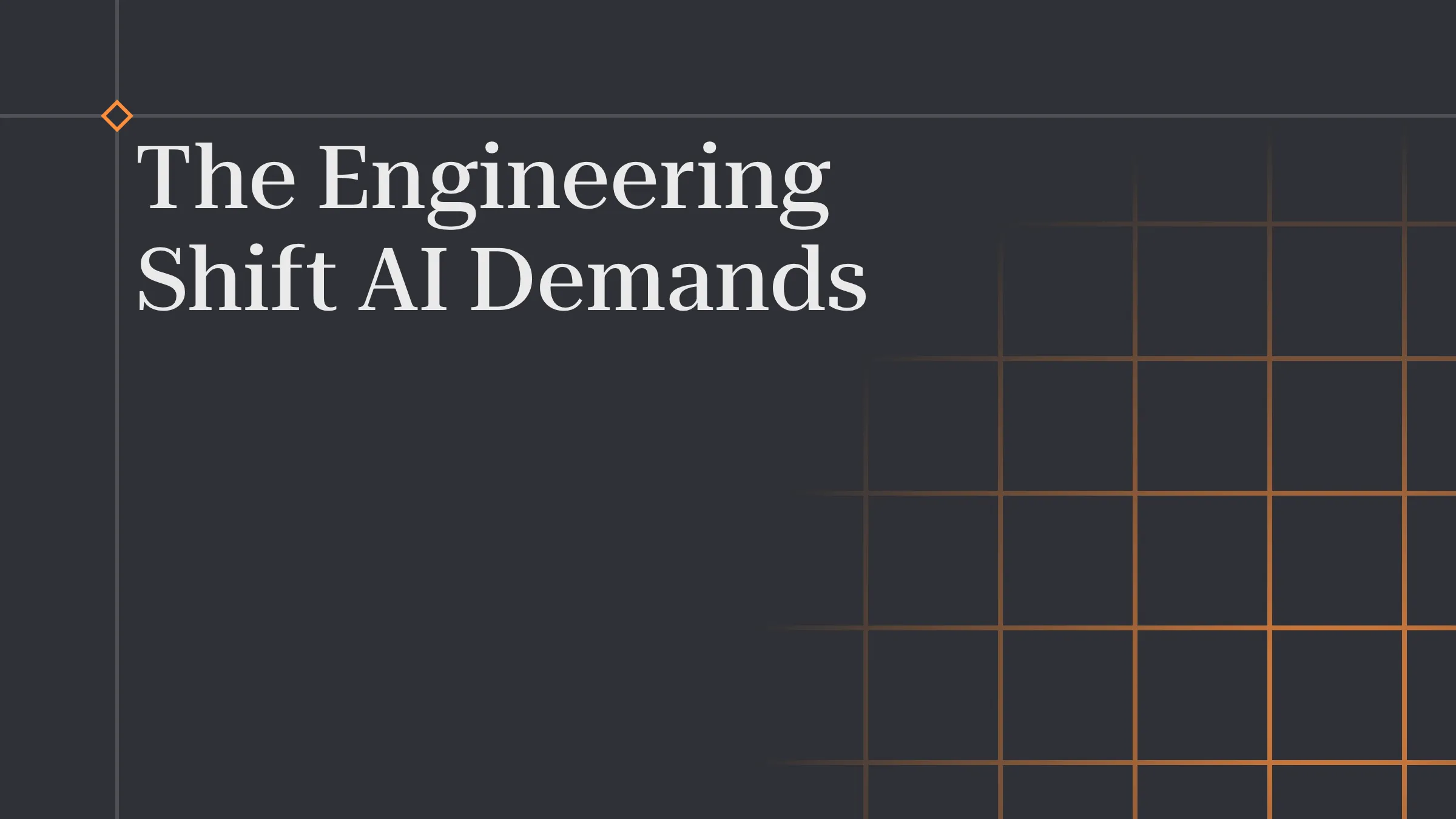
The Engineering Shift AI Demands
The best engineers have always blurred the lines.
They wrote backend logic, shipped frontend UI, cared about performance and user experience. They didn’t stop at “my part’s done” and they owned the outcome. In fact they wanted to own the flow. These are product engineers. Or, as we used to call them: software engineers (back in the 2000s we all used to do all the things without so many specialisms!).
And now, with AI in the mix, this mindset isn’t optional. I believe it’s essential.
AI changes the stack. Not the mission
You’re prompting models. You’re orchestrating workflows. You’re building systems that behave almost deterministically — until they don’t. But the goal is still the same: ship things that work, for real users, in production.
What has changed is the nature of the building blocks.
LLMs, vector stores, agents, planning loops all introduce new layers of abstraction and uncertainty. Code isn’t the only logic anymore. Some of it is probabilistic. Some of it is external. Some of it is just… weird. But weird is good right? Well, fun at least!
This means you can’t rely on tight call/response chains and hope things behave. Instead, you need:
- Event boundaries that decouple components
- Structured retries that respect non-determinism
- Dynamic workflows depending on responses and data
- A feedback loop that can help to explain behaviour, not just log it, with input from users and AI
AI adds more surface area and more failure modes, and that means more responsibility sits with the engineers. Engineers who will be valuable here are those who can manage ambiguity without sacrificing velocity.
If you’re still diagramming flows you haven’t tested, you’re not going to make it. You don’t need a blueprint, or yet another system diagram. You need a feedback loop! Especially with the speed that proof of concepts and explorations of new functionality can be created now.
The scaling bar just got higher
Prototypes are easy. Demos are easy. But surviving success? That’s hard. Especially with LLMs and agents involved. Most agent demos fail because they were never designed to survive success:
- No retry logic
- No event boundaries
- No way to tell why something happened — or didn’t
It’s not just about throughput or currently active users or page load speed.A key thing to understand is behavioural complexity. Don’t read this to mean you need to over-provision your instances or design for a factor of 10x in throughput or concurrency than anticipated. It’s scaling of retries. Of being resilient.
A single LLM response can break a workflow. A failed retry can silently block user progress. The decisions your system makes aren’t deterministic anymore, so your infra or code can’t just assume the happy path. It never should have done. Defensive programming is important. Now it’s imperative (pun intended).
The AI stack pushes complexity to the edges, and that means the infra supporting it needs to absorb that complexity without collapsing. Logging isn’t enough. Distributed tracing isn’t optional. Observability isn’t a nice-to-have. It’s your only shot at debugging what happened five hops downstream.
If you’re treating scale as a future problem, you’re already too late. It matters so much earlier with this kind of complexity.
Ship > spec
In high-performing teams, shipping beats detailed PRDs and endless meetings. Always. That doesn’t mean cowboy coding. It means short loops, clear ownership, and feedback over fantasy. And OK, a few instances of oops with a fast fix forward!
Silos get in the way of that. And for teams under 100 engineers they’re often self-inflicted wounds. The fastest way to build is to stop pretending frontend/backend or mobile/web or … are separate problems. Your LLM output affects your cache hit rate. Your observability flow affects user trust. Your retry logic might live across three services. It’s all connected. Start thinking about systems and your engineering teams differently.
Infra that doesn’t get in the way
At Sailhouse, we’re building for the engineers who:
- Care about speed and scale
- Want tools that debug cleanly, not hide magic
- Build across systems, not inside boxes
We give you:
- Event coordination without glue code
- First-class retries, filtering, and async orchestration
- Observability that spans agent loops and traditional systems
- Dynamic workflows that respond to data as well as logic
You’re not building systems anymore. Well you are. But it goes above that. You now need to be orchestrating intent. And you deserve a platform that treats that with the respect it requires. And helps you to do the fun things while supporting the necessary things.
Build the thing. Ship the thing. Repeat.
The teams that will win are the ones who treat AI as another tool in the toolbox, not a replacement for thinking clearly and building well. The fundamentals haven’t changed. But the what, how, and even why, is evolving constantly right now.
Let’s stop over-designing for scale we’ll never hit. Or indeed anything else. But please let’s start shipping the kind of systems that can grow with us. And not wake us up at midnight.